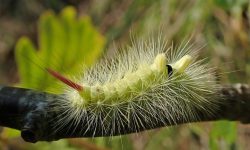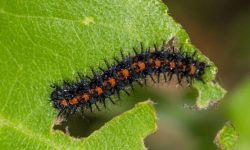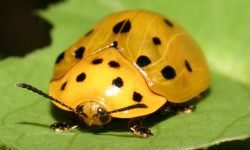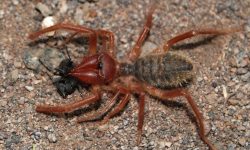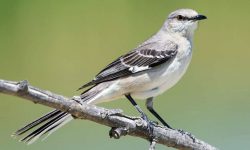The Lizards of North Carolina encompass a rich tapestry of reptilian diversity within the state’s varied landscapes. From the towering peaks of the Appalachian Mountains to the coastal plains and marshes, North Carolina provides habitat for a diverse array of lizard species. Among them, the Eastern Fence Lizard, Green Anole, and Five-lined Skink are commonly encountered in forests, grasslands, and urban areas alike.
The following article will compile the 15 most common lizard species that can be found in North Carolina and how to identify them.
Common Lizards of North Carolina
Eastern Glass Lizard
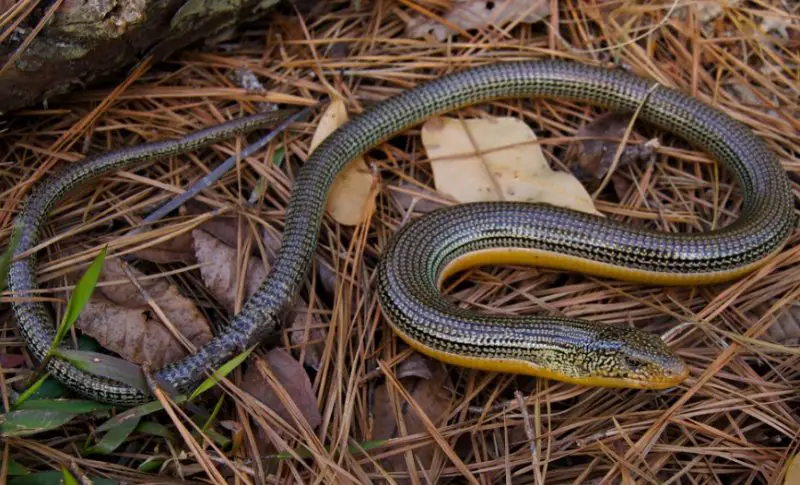
The Eastern Glass Lizard (Ophisaurus ventralis) is a legless lizard native to the southeastern United States. Adults can reach up to 43 inches (100 cm) in length, featuring distinctive white markings on the neck. Juveniles are typically khaki-colored with two dark stripes. Despite their snake-like appearance, these lizards are harmless and are distinguished by their ability to detach their tails to escape predators.
They primarily inhabit grassy or sandy areas and feed on insects, spiders, and small vertebrates. Their unique appearance and behavior make them a fascinating subject for both herpetologists and nature enthusiasts.
Mimic Glass Lizard
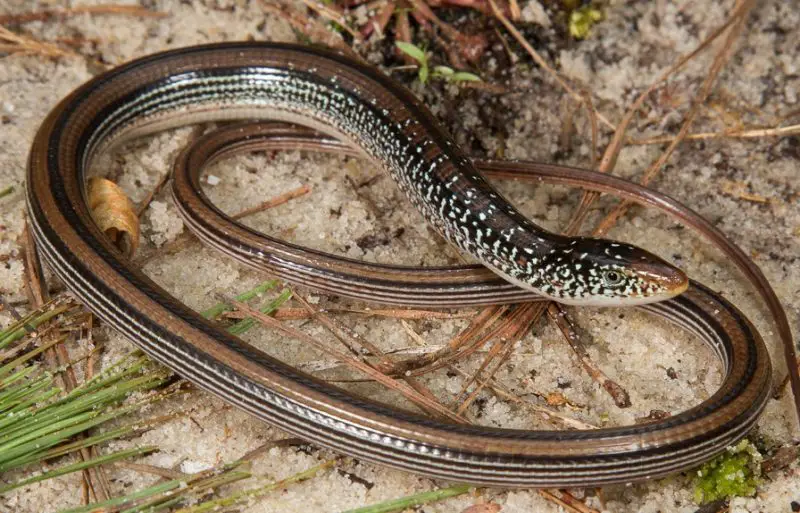
The Mimic glass lizard (Ophisaurus mimicus), also known as the rainbow glass lizard, is the smallest among the glass lizards, reaching up to 25 inches (65 cm) in length. Typically tan or brown, they feature a black or dark brown mid-dorsal stripe and up to four additional dark stripes with spots. Males are generally larger than females.
Native to the southeastern coastal plains, pine forests, and open woodlands, these legless lizards are often mistaken for snakes. Their unique appearance and habitat preferences make them an intriguing species for herpetologists and nature lovers alike.
Slender Glass Lizard
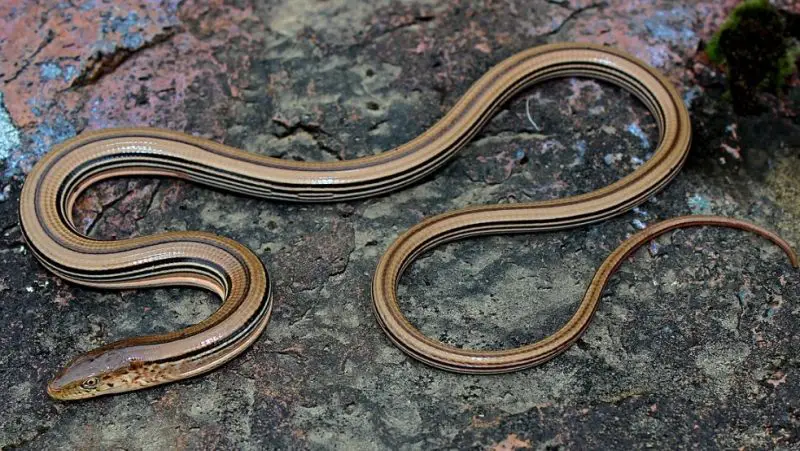
The Slender Glass Lizard (Ophisaurus attenuatus) is a legless lizard native to the United States, capable of autotomy, or tail detachment, as a defense mechanism. Growing up to 26 inches, they inhabit woodlands and dry, rocky hills, often camouflaging in tall grass. Their diet includes insects and smaller lizards.
Characterized by their brown and yellow coloration with six stripes, they are swift movers, aiding in their escape from predators. This species’ unique adaptations and habitats make it a fascinating subject for study and observation.
Little Brown Skink
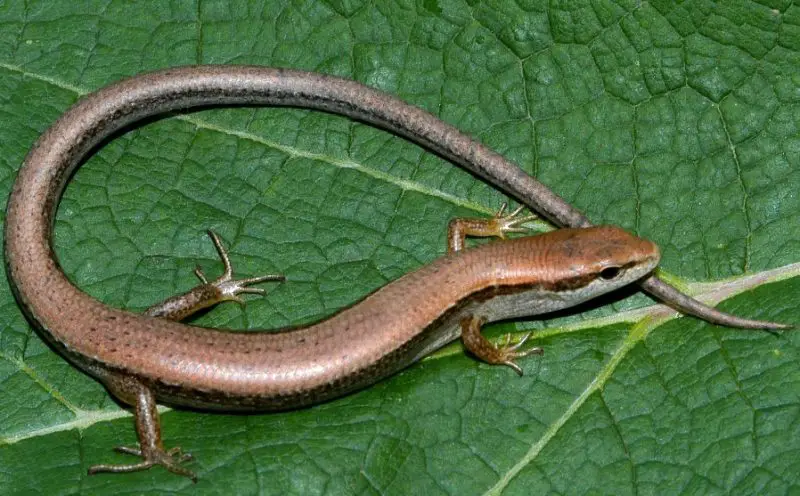
The Little brown skink (Scincella lateralis), also known as the ground skink, is a small lizard native to northern Mexico and the eastern United States. These diminutive reptiles can grow up to 5.5 inches (14.5 cm), including their tails. They are characterized by their copper brown coloration and a white or yellow belly.
With short legs and an elongated body, they are well-adapted to their habitats, which range from leaf litter in forests to grassy areas. Their small size and subtle coloration help them blend into their surroundings, providing effective camouflage from predators.
Broad-Headed Skink
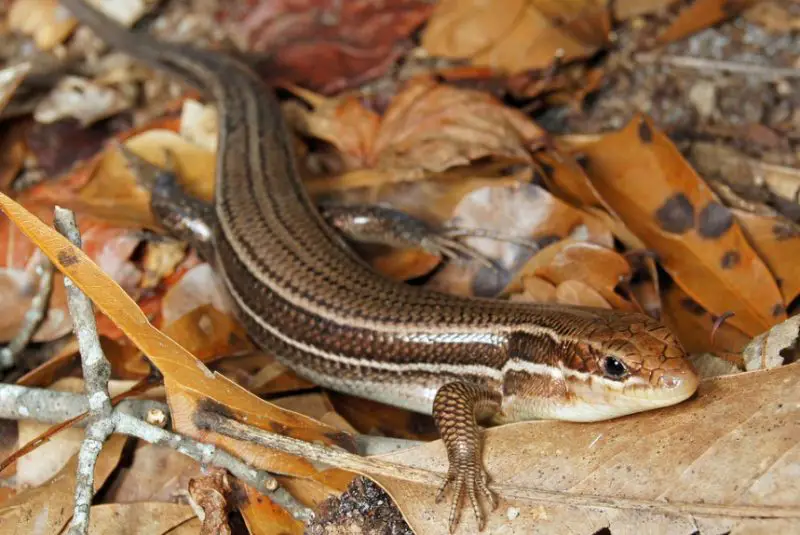
The Broad-headed skink (Plestiodon laticeps), also known as the broadhead skink, is one of the larger skinks, growing up to 13 inches (33 cm) in length. They are distinguished by their wide jaws, giving their heads a triangular appearance. Adult males are typically olive brown or brown, with orange heads during the mating season, while females have five light stripes down their backs. Juveniles are dark brown with striking blue tails.
Native to the United States, these skinks are often found in urban areas and are known to seek shelter in trees, making them a common sight in both natural and suburban environments.
Southeastern Five-Lined Skink
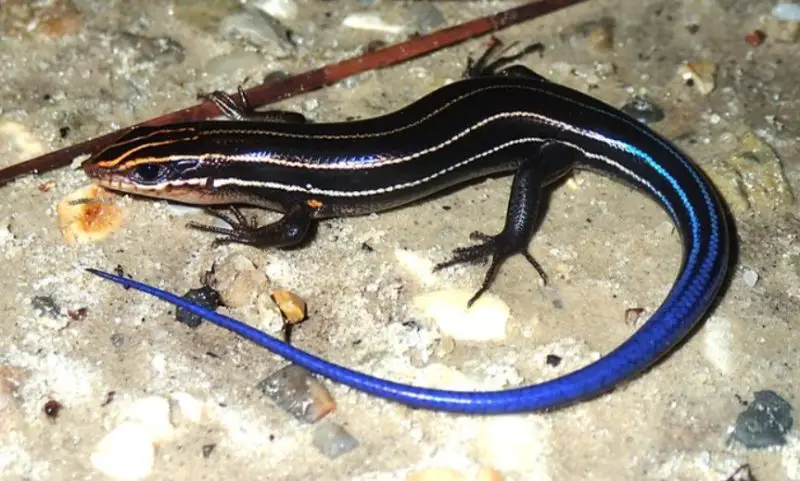
The Southeastern five-lined skink (Plestiodon inexpectatus) is a striking lizard known for its five stripes along its body, which lighten as it ages. The middle stripe is notably narrower than the others. Juveniles feature a bright blue tail and red-tinted stripes near the head. These skinks are ground dwellers, typically found in wooded areas, where they primarily feed on insects.
Their vibrant coloration in youth and distinct striping make them easily recognizable, while their adaptability allows them to thrive in a variety of forested habitats across their range.
Five-Lined Skink

The Five-lined skink (Plestiodon fasciatus), also known as the American five-lined skink, is a common lizard native to North America, found throughout the United States and parts of Canada. These medium-sized lizards grow up to 8.5 inches (21.5 cm). Juveniles are dark brown to black with five distinct yellow or white stripes and a bright blue tail, which fades with age.
They inhabit moist and wooded areas and are known to hide inside building walls. Interestingly, the five-lined skink is among approximately 16 lizard species in the US with a blue tail, showcasing a common adaptive trait in lizard evolution.
Coal Skink
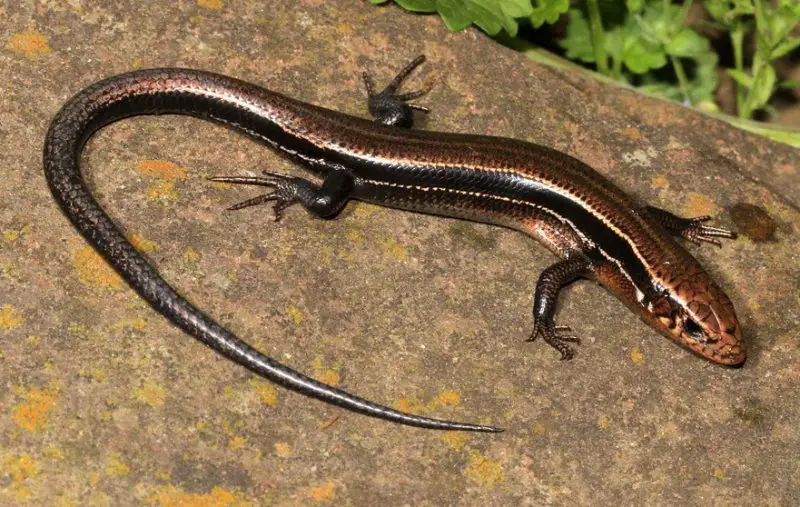
The Coal skink (Plestiodon anthracinus) is a North American lizard reaching up to 7.1 inches (18 cm) in length. Characterized by light stripes running down to the tail, it has a broad dark stripe and lacks light lines on top of its head. During mating season, males develop red sides on their heads. Juveniles sport blue tails, with northern coal skink babies mirroring adult striping, while southern juveniles are black with faint stripes.
These skinks prefer rocky outcrops, hillsides, and sometimes hide in shallow water, making their habitats diverse and interesting.
Six-Lined Racerunner
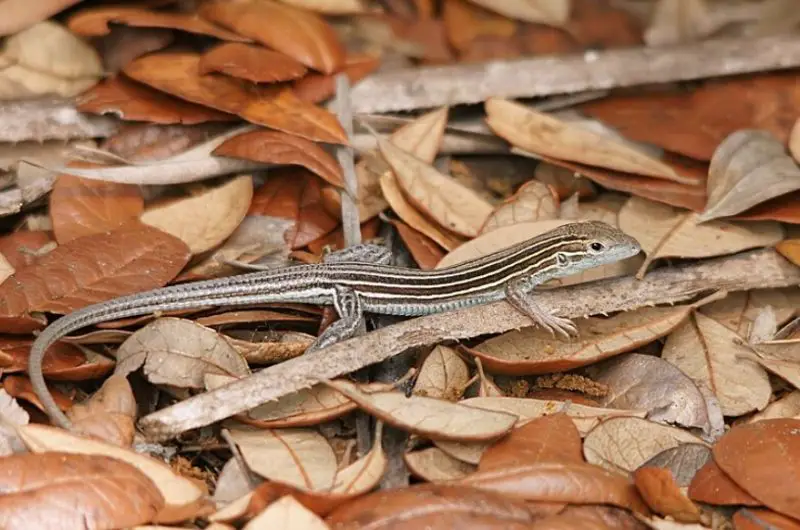
The Six-lined racerunner (Aspidoscelis sexlineatus) is a lizard native to the United States and Mexico. This species is dark green, brown, or black, with six yellow or green-yellow stripes running from head to tail. Females have a white underside, while males feature a pale blue belly and a distinctive green throat. Notably, their tail is twice the length of their slender body.
Known for their speed, these lizards can reach up to 18 miles per hour (29 kilometers per hour) to escape threats. They inhabit woodlands, grasslands, rocky outcrops, and floodplains, making them adaptable to various environments.
Eastern Fence Lizard
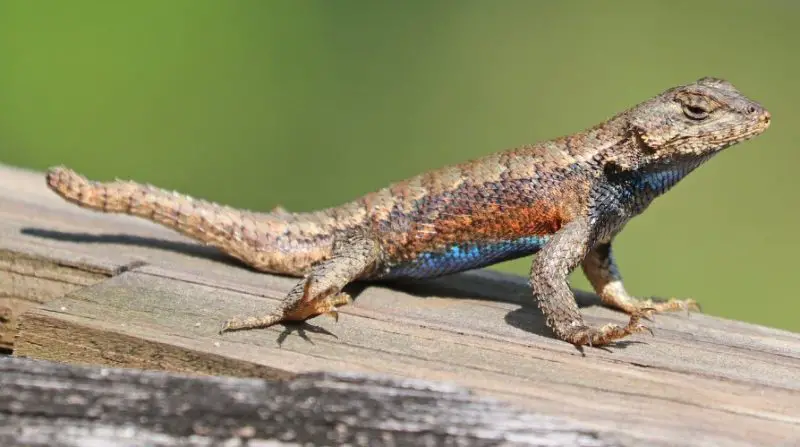
The Eastern fence lizard (Sceloporus undulatus), also known as the prairie lizard or gray lizard, is a medium-sized reptile commonly found in rock piles, rotting logs, and forest edges across the United States. Growing up to 7.5 inches (19 centimeters) in length, they are typically gray or brown with a dark line along the back of the thigh.
Females display dark wavy lines on their backs, while males may appear more green or blue than brown during the summer months. Their widespread distribution spans from New York to the Carolinas and from Southern Indiana to Kentucky, making them a familiar sight in various habitats.
Texas Horned Lizard
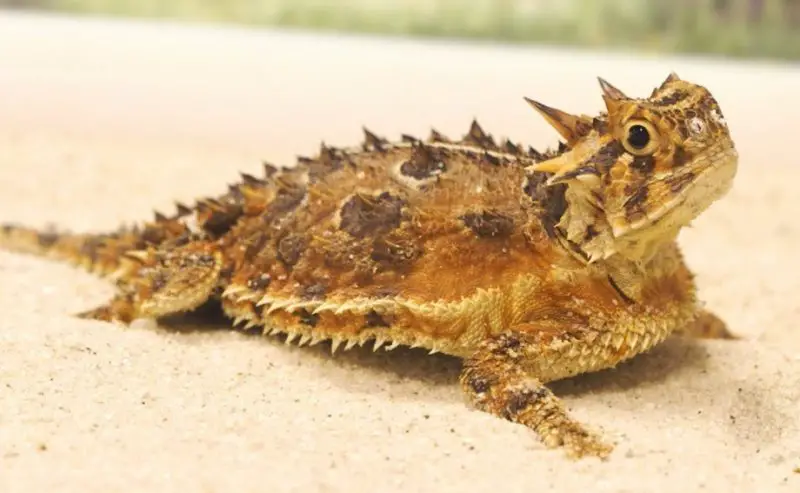
The Texas horned lizard (Phrynosoma cornutum) is among North America’s fourteen spiky-bodied reptiles, known as horned lizards. Ranging from North Mexico to Carolina, these lizards are often believed to be escaped or released pets. They possess rounded bodies, blunt snouts, and a distinctive horn, an extension of the cranium. With average sizes of around 3.7 inches for males and 4.5 inches for females, they are widely distributed.
Despite their fierce appearance, Texas horned lizards are docile creatures. As adept diggers, they quickly seek refuge underground when threatened, showcasing their remarkable survival instincts in the face of danger.
Green Anole
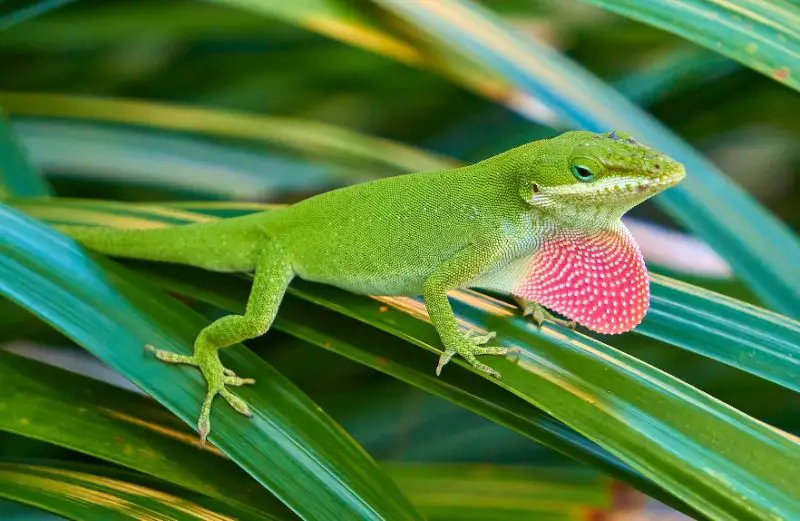
The Green anole (Anolis carolinensis), also known as the Carolina anole, is native to the southeastern United States but has been introduced elsewhere. Females typically have a white dorsal stripe. Their coloration ranges from brown to green, with the ability to change based on stress, activity levels, and mood. This adaptable lizard is better known for its green hue, hence the common name “green anole.
With various aliases like Carolina green anole and American chameleon, it showcases its widespread presence and intriguing ability to blend into its surroundings, making it a fascinating subject for reptile enthusiasts and observers alike.
Mediterranean House Gecko
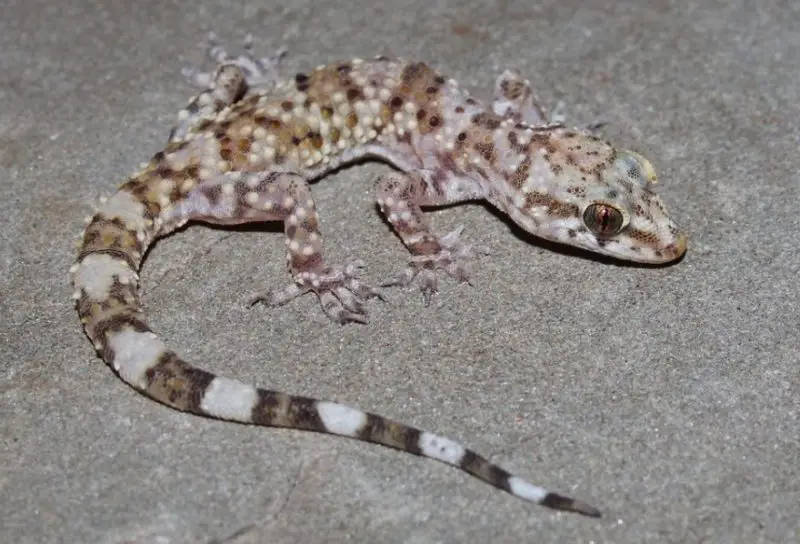
The Mediterranean house gecko (Hemidactylus turcicus), also known as the Turkish gecko, is a widespread species found globally. These nocturnal creatures reach lengths of up to 5.9 inches (15 centimeters) and are characterized by lidless eyes and tan skin adorned with black spots. Their tails display distinctive stripes, and their bellies are translucent.
Often solitary or found in small groups of up to five, these geckos are commonly spotted around human habitation, where they hunt insects attracted to lights. Their adaptability and unobtrusive presence make them a familiar sight in urban and suburban environments worldwide.


